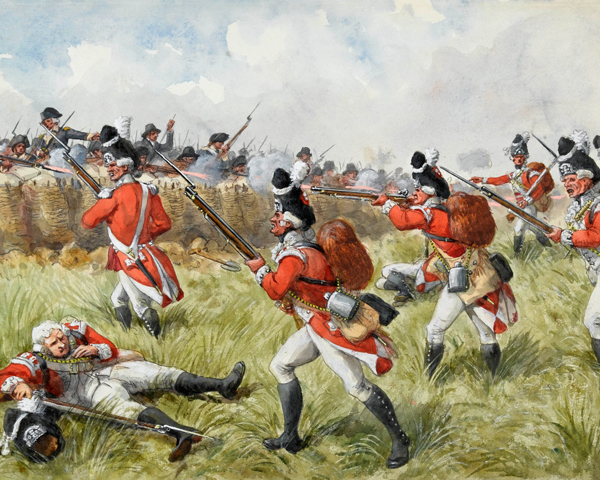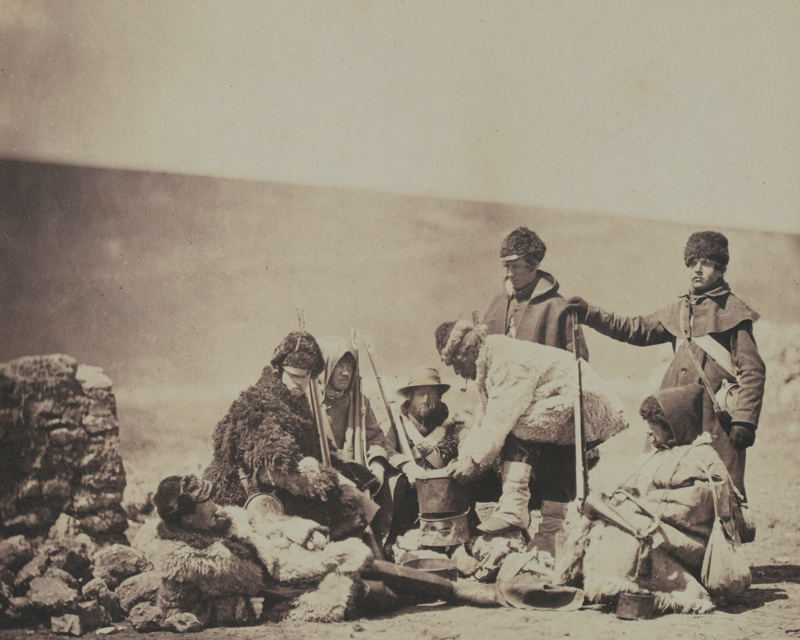Origins
In 1741, Sir John Mordaunt raised a regiment in Scotland. Only four years after its formation, it served during the Second Jacobite Rebellion (1745-46), fighting at both Prestonpans (1745) and Falkirk (1746). It also helped defend Edinburgh Castle, despite the Jacobite army capturing the surrounding city.
Canada
In 1746, the regiment was given the numeral 58, although this rose to 47 in 1751. In the meantime, it had moved to Ireland in 1748.
It was then posted to Canada in 1750, where it stayed for 13 years, serving at Louisbourg (1758) and Quebec (1759) during the Seven Years War (1756-63). It later took to wearing a black line in its uniform lace to commemorate General Wolfe’s death there.
In 1763, the regiment began another long posting, this time for 10 years in Ireland.
America
At the end of its Irish posting, the 47th returned to North America, fighting at Lexington, Concord and Bunker Hill (1775) in the American War of Independence (1775-83).
The regiment remained there until 1777, when it was captured at Saratoga. It was then interned until the end of the war, finally arriving back in England in May 1783. During its internment, in 1782, it was also first given its territorial association with Lancashire.
In 1783, it was sent on a seven-year deployment to Ireland. In 1790, it moved to Nova Scotia, then the following year to the West Indies. It remained there until returning to England in 1803. That same year, the regiment also raised a 2nd Battalion, initially for home service.
Early 19th century
The 1st Battalion was next on garrison duty at the Cape of Good Hope from 1806 to 1808, with a brief interlude as part of the abortive 1807 expedition to South America. It was then moved to the Indian subcontinent, where it stayed for over 20 years, fighting in the Persian Gulf (1809), the Third Maratha War (1817-18) and the First Burma War (1824-26).
In 1809, 2nd Battalion was moved to garrison Gibraltar, before fighting its way from Spain into southern France during the Peninsular War (1808-14). Its service in Spain included the battles of Barrosa (1811), Vitoria (1813), San Sebastian (1813) and Nive (1813). The battalion was then recalled to England and disbanded in October 1814.
Victorian campaigns
The 1st Battalion returned from India in 1829. It then spent 21 years serving in England and Ireland before its next overseas posting to the Ionian Islands in 1850. From there, it moved to Malta in 1853 and then to the Crimean War (1854-56) the following year, fighting at Alma (1854), Inkerman (1854) and Sevastopol (1854-55).
After returning to garrison Malta and Gibraltar, the regiment was posted to Canada in 1861 to strengthen the British position during heightened tensions with the Union during the American Civil War (1861-65) and to fight the Fenian Raids (1866-71) across the US-Canadian border.
It was then stationed on Barbados from 1868 to 1870, before returning to serve in Ireland, England and the Channel Islands.
Quiz
Which of the following was a nickname of the 47th Regiment?
The regiment was called 'the Cauliflowers' due to the colour of their uniform facings (cuffs, lapels and coat tails).
Legacy
The regiment was still garrisoning Ireland in 1881, when it was merged with the 81st Regiment of Foot (Loyal Lincoln Volunteers) to form The Loyal Regiment (North Lancashire).
Regimental museums
The National Army Museum works with a network of Regimental and Corps Museums across the UK to help preserve and share the history and traditions of the Army and its soldiers.
Discover more about the 47th Regiment of Foot by visiting the Lancashire Infantry Museum in Preston.













